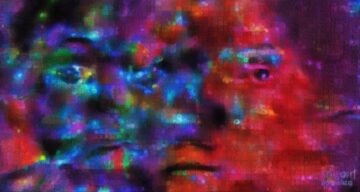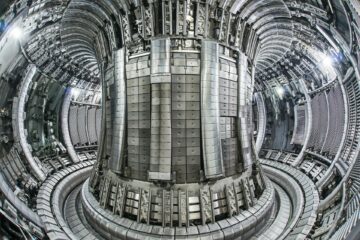
The origin of consciousness has teased the minds of philosophers and scientists for centuries. In the last decade, neuroscientists have begun to piece together its neural underpinnings—that is, how the brain, through its intricate connections, transforms electrical signaling between neurons into consciousness.
Yet the field is fragmented, an international team of neuroscientists recently wrote in a new paper in Neuron. Many theories of consciousness contradict each other, with different ideas about where and how consciousness emerges in the brain.
Some theories are even duking it out in a mano-a-mano test by imaging the brains of volunteers as they perform different tasks in clinical test centers across the globe.
But unlocking the neural basis of consciousness doesn’t have to be confrontational. Rather, theories can be integrated, wrote the authors, who were part of the Human Brain Project—a massive European endeavor to map and understand the brain—and specialize in decoding brain signals related to consciousness.
Not all authors agree on the specific brain mechanisms that allow us to perceive the outer world and construct an inner world of “self.” But by collaborating, they merged their ideas, showing that different theories aren’t necessarily mutually incompatible—in fact, they could be consolidated into a general framework of consciousness and even inspire new ideas that help unravel one of the brain’s greatest mysteries.
If successful, the joint mission could extend beyond our own noggins. Brain organoids, or “mini-brains,” that roughly mimic early human development are becoming increasingly sophisticated, spurring ethical concerns about their potential for developing self-awareness (to be clear, there aren’t any signs). Meanwhile, similar questions have been raised about AI. A general theory of consciousness, based on the human mind, could potentially help us evaluate these artificial constructs.
“Is it realistic to reconcile theories, or even aspire to a unified theory of consciousness?” the authors asked. “We take the standpoint that the existence of multiple theories is a sign of healthiness in this nascent field…such that multiple theories can simultaneously contribute to our understanding.”
Lost in Translation
I’m conscious. You are too. We see, smell, hear, and feel. We have an internal world that tells us what we’re experiencing. But the lines get blurry for people in different stages of coma or for those locked-in—they can still perceive their surroundings but can’t physically respond. We lose consciousness in sleep every night and during anesthesia. Yet, somehow, we regain consciousness. How?
With extensive imaging of the brain, neuroscientists today agree that consciousness emerges from the brain’s wiring and activity. But multiple theories argue about how electrical signals in the brain produce rich and intimate experiences of our lives.
Part of the problem, wrote the authors, is that there isn’t a clear definition of “consciousness.” In this paper, they separated the term into two experiences: one outer, one inner. The outer experience, called phenomenal consciousness, is when we immediately realize what we’re experiencing—for example, seeing a total solar eclipse or the northern lights.
The inner experience is a bit like a “gut feeling” in that it helps to form expectations and types of memory, so that tapping into it lets us plan behaviors and actions.
Both are aspects of consciousnesses, but the difference is hardly delineated in previous work. It makes comparing theories difficult, wrote the authors, but that’s what they set out to do.
Meet the Contenders
Using their “two experience” framework, they examined five prominent consciousness theories.
The first, the global neuronal workspace theory, pictures the brain as a city of sorts. Each local brain region “hub” dynamically interacts with a “global workspace,” which integrates and broadcasts information to other hubs for further processing—allowing information to reach the consciousness level. In other words, we only perceive something when all pieces of sensory information—sight, hearing, touch, taste—are woven into a temporary neural sketchpad. According to this theory, the seat of consciousness is in the frontal parts of the brain.
The second, integrated information theory, takes a more globalist view. The idea is that consciousness stems from a series of cause-effect reactions from the brain’s networks. With the right neural architecture, connections, and network complexity, consciousness naturally emerges. The theory suggests the back of the brain sparks consciousness.
Then there’s dendritic integration theory, the coolest new kid in town. Unlike previous ideas, this theory waved the front or back of the brain goodbye and instead zoomed in on single neurons in the cortex, the outermost part of the brain and a hub for higher cognitive functions such as reasoning and planning.
The cortex has extensive connections to other parts of the brain—for example, those that encode memories and emotions. One type of neuron, deep inside the cortex, especially stands out. Physically, these neurons resemble trees with extensive “roots” and “branches.” The roots connect to other parts of the brain, whereas the upper branches help calculate errors in the neuron’s computing. In turn, these upper branches generate an error signal that corrects mistakes through multiple rounds of learning.
The two compartments, while physically connected, go about their own business—turning a single neuron into multiple computers. Here’s the crux: There’s a theoretical “gate” between the upper and lower neural “offices” for each neuron. During consciousness, the gate opens, allowing information to flow between the cortex and other brain regions. In dreamless sleep and other unconscious states, the gate closes.
Like a light switch, this theory suggests that consciousness is supported by flicking individual neuron gates on or off on a grand scale.
The last two theories propose that recurrent processing in the brain—that is, it learns from previous experiences—is essential for consciousness. Instead of “experiencing” the world, the brain builds an internal simulation that constantly predicts the “here and now” to control what we perceive.
A Unified Theory?
All the theories have extensive experiments to back up their claims. So, who’s right? To the authors, the key is to consider consciousness not as a singular concept, but as a “ladder” of sorts. The brain functions at multiple levels: cells, local networks, brain regions, and finally, the whole brain.
When examining theories of consciousness, it also makes sense to delineate between different levels. For example, the dendritic integration theory—which considers neurons and their connections—is on the level of single cells and how they contribute to consciousness. It makes the theory “neutral,” in that it can easily fit into ideas at a larger scale—those that mostly rely on neural network connections or across larger brain regions.
Although it’s seemingly difficult to reconcile various ideas about consciousness, two principles tie them together, wrote the team. One is that consciousness requires feedback, within local neural circuits and throughout the brain. The other is integration, in that any feedback signals need to be readily incorporated back into neural circuits, so they can change their outputs. Finally, all authors agree that local, short connections are vital but not enough. Long distance connections from the cortex to deeper brain areas are required for consciousness.
So, is an integrated theory of consciousness possible? The authors are optimistic. By defining multiple aspects of consciousness—immediate responses versus internal thoughts—it’ll be clearer how to explore and compare results from different experiments. For now, the global neuronal workspace theory mostly focuses on the “inner experience” that leads to consciousness, whereas others try to tackle the “outer experience”—what we immediately experience.
For the theories to merge, the latter groups will have to explain how consciousness is used for attention and planning, which are hallmarks for immediate responses. But fundamentally, wrote the authors, they are all based on different aspects of neuronal connections near and far. With more empirical experiments, and as increasingly more sophisticated brain atlases come online, they’ll move the field forward.
Hopefully, the authors write, “an integrated theory of consciousness…may come within reach within the next years or decades.”
Image Credit: SIMON LEE / Unsplash
- SEO Powered Content & PR Distribution. Get Amplified Today.
- PlatoData.Network Vertical Generative Ai. Empower Yourself. Access Here.
- PlatoAiStream. Web3 Intelligence. Knowledge Amplified. Access Here.
- PlatoESG. Carbon, CleanTech, Energy, Environment, Solar, Waste Management. Access Here.
- PlatoHealth. Biotech and Clinical Trials Intelligence. Access Here.
- Source: https://singularityhub.com/2024/05/20/scientists-are-working-towards-a-unified-theory-of-consciousness/
- :has
- :is
- :not
- :where
- $UP
- 24
- a
- About
- According
- across
- actions
- activity
- agree
- AI
- All
- allow
- Allowing
- also
- an
- and
- anesthesia
- any
- architecture
- ARE
- areas
- argue
- artificial
- AS
- asked
- aspects
- aspire
- At
- attention
- authors
- back
- based
- basis
- BE
- becoming
- been
- begun
- behaviors
- between
- Beyond
- Bit
- Brain
- brains
- branches
- broadcasts
- builds
- but
- by
- calculate
- called
- CAN
- cell
- Cells
- Centers
- centuries
- change
- circuits
- City
- claims
- clear
- clearer
- Clinical
- Closes
- cognitive
- collaborating
- Coma
- come
- compare
- comparing
- complexity
- computers
- computing
- concept
- Concerns
- Connect
- connected
- Connections
- conscious
- Consciousness
- Consider
- considers
- constantly
- construct
- constructs
- contribute
- control
- cortex
- could
- credit
- crux
- decade
- decades
- Decoding
- deep
- deeper
- defining
- definition
- developing
- Development
- difference
- different
- difficult
- distance
- do
- Doesn’t
- during
- dynamically
- each
- Early
- easily
- emerges
- emotions
- endeavor
- enough
- error
- Errors
- especially
- essential
- ethical
- European
- evaluate
- Even
- Every
- Examining
- example
- existence
- expectations
- experience
- Experiences
- experiencing
- experiments
- Explain
- explore
- extend
- extensive
- fact
- far
- feedback
- feel
- field
- Finally
- First
- fit
- five
- flow
- focuses
- For
- form
- Forward
- fragmented
- Framework
- from
- front
- functions
- fundamentally
- further
- gate
- Gates
- General
- generate
- get
- Global
- globe
- Go
- grand
- greatest
- Group’s
- hallmarks
- hardly
- Have
- hear
- hearing
- help
- helps
- higher
- How
- How To
- HTTPS
- Hub
- hubs
- human
- idea
- ideas
- Imaging
- immediate
- immediately
- in
- In other
- Incorporated
- increasingly
- individual
- information
- inner
- inside
- inspire
- instead
- integrated
- Integrates
- integration
- interacts
- internal
- International
- intimate
- into
- intricate
- IT
- ITS
- joint
- jpeg
- Key
- Kid
- larger
- Last
- latter
- Leads
- learning
- learns
- Lets
- Level
- levels
- light
- lights
- like
- lines
- Lives
- local
- Long
- lose
- lower
- MAKES
- many
- map
- massive
- Meanwhile
- mechanisms
- Memories
- Memory
- Merge
- mind
- minds
- Mission
- mistakes
- more
- mostly
- move
- multiple
- mutually
- nascent
- naturally
- Near
- necessarily
- Need
- network
- networks
- Neural
- neural network
- neuronal
- Neurons
- New
- next
- night
- now
- of
- off
- on
- ONE
- online
- only
- opens
- Optimistic
- or
- Origin
- Other
- Others
- our
- out
- outputs
- own
- Paper
- part
- parts
- People
- perform
- phenomenal
- Physically
- Pictures
- piece
- pieces
- plan
- planning
- plato
- Plato Data Intelligence
- PlatoData
- possible
- potential
- potentially
- Predicts
- previous
- principles
- Problem
- processing
- produce
- prominent
- propose
- Questions
- raised
- rather
- reach
- reactions
- readily
- realistic
- realize
- reasoning
- recently
- recurrent
- regain
- region
- regions
- related
- rely
- required
- requires
- Respond
- responses
- Results
- Rich
- right
- roots
- roughly
- rounds
- Scale
- scientists
- Second
- see
- seeing
- seemingly
- Self-Awareness
- sense
- Series
- set
- Short
- showing
- sign
- Signal
- signals
- Signs
- similar
- simulation
- simultaneously
- single
- singular
- sleep
- Smell
- So
- solar
- somehow
- something
- sophisticated
- Sparks
- specialize
- specific
- stages
- standpoint
- stands
- States
- stems
- Still
- successful
- such
- Suggests
- Supported
- Switch
- tackle
- Take
- takes
- tapping
- tasks
- team
- teased
- tells
- temporary
- term
- test
- that
- The
- the joint
- the world
- their
- Them
- theoretical
- theory
- There.
- These
- they
- this
- those
- Through
- throughout
- TIE
- to
- today
- together
- too
- Total
- touch
- towards
- town
- transforms
- Trees
- try
- TURN
- two
- type
- types
- understand
- understanding
- unified
- unlike
- unlocking
- unravel
- us
- used
- various
- Versus
- View
- vital
- volunteers
- we
- were
- What
- when
- whereas
- which
- while
- WHO
- whole
- will
- with
- within
- words
- Work
- working
- world
- woven
- write
- wrote
- years
- yet
- you
- zephyrnet











